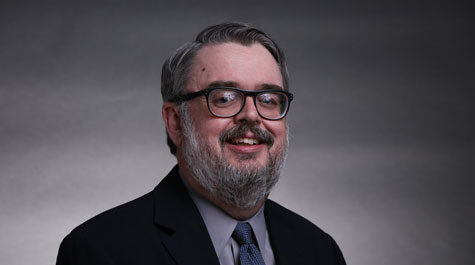Crusades class a hot ticket at W&M
Philip Daileader may not think he’s a rock star, but admission to his Crusades class has been one of the hottest tickets on the William & Mary campus for years.
It’s a combination of curiosity about the topic, current events reintroducing the Crusades in a modern context and the professor, depending upon whom you ask.
Students are very globally-minded these days and are keenly interested in the near East and West, and the relations between the two, according to Daileader, a professor of history. They want to understand where the Crusades fit in.
“They want to know the deep background to the modern world,” Daileader said. “And that’s what medieval historians want to teach. We want to teach the deep background. We want people to go back 400, 500, 600, 700 years so that they can understand how then became now.
“The other thing that drives the interest I think is that Crusades figure prominently in political discourse these days.”
Those unlucky enough to lose the concert ticket fast-click fest known as registration have to ask for an override to get into the class, and Daileader’s given plenty of them. Since the Banner computer system was implemented in 2004, the average number of overrides for the Crusades is 5.5 with a high of 10 last fall and eight for the current semester.
“We also know that hundreds of students have wanted to take the class over the years, but they were not able to get in because it was already full when they attempted to enroll,” said Sallie Marchello, associate provost and university registrar.
Daileader often requires that a student sit through his first lecture before he will grant an override. The overrides are added to a full class of 35, with him never going over 43 or 44 students so that he can still have discussion days every third class.
“It’s always gratifying if students are interested in taking what you’re teaching, so it’s a nice problem to have,” Daileader said. “And I try to add in students up to the maximum number that the room will hold.
“People sometimes ask well, why do you go to 43 or 44? I’ve got 43 or 44 chairs.”
Though they are perhaps initially charmed by the subject matter, Daileader’s engaging teaching style is what former students said made the class so appealing to them. Word spreads from former to current students.
Dave Goulden Naitove ’20 said the class is popular for two reasons — because the Crusades appeal to people who have “romantic or idealized notions” of the medieval period, as well as those who have a more informed but no less intense interest, and because of Daileader’s “skill, charisma and dynamism.”
“He is incredibly engaging and funny, an excellent lecturer, and very good at explaining historical facts, trends and phenomenon in a way that is interesting and easy to absorb,” Naitove said. “His reputation as an excellent professor is well known throughout the ranks of history majors at this university, who are quick to recommend his classes to friends and acquaintances.”
Jess Wakelin ’20 also took the Crusades last fall as Naitove did, citing Daileader’s proficiency in getting through so much material in a most interesting way. She too was encouraged by upperclassmen to get into one of Daileader’s classes, and cited his sense of humor in creating an atmosphere that felt like watching the taping of a live TV talk show.
“The Crusades can be quite a heavy topic, and there is also a lot to cover in the class because of the sheer amount of Crusades and people who were involved in them and have subsequently commented on them,” Wakelin said. “Despite all this, Professor Daileader manages to make it not seem so overwhelming.
“His ability to read the room and create an atmosphere that allows for humor, jokes and conversation while at the same time ensuring that we all understand the subject matter is what really stands out. He puts so much energy into each class, including speaking in different voices and changing his pitch, to always make it interesting.”
About that large amount of material — Daileader said it’s no joke.
“Unfortunately for students, there are a lot of Crusades — many, many more than they realized before they came into the class,” he said. “And I think if they knew how many Crusades there were, the enrollments would probably be quite a bit lower.”
In addition to names, dates and events, there are the cultures and contact and perceptions about each side. Daileader gets through all of it efficiently, he said, by being very well-organized and ruthlessly pruning down to the essentials.
“You want students to learn without realizing they’re learning,” he said. “You want them to walk out having absorbed a lot of this material and having thought about issues they haven’t thought about before. But if they come out of the class without feeling overstuffed, I think is the goal that we have to be working towards here.”
Daileader hopes to dispel preconceived emotional leanings about the Crusades, which he said students often bring to the class either seeing the Crusades as completely bad or maybe not so bad.
“Our job as professors is to get students to recognize these inclinations that they have and then to get students to work against them,” he said. “Our job is to get students to look at the other point of view. And the Crusades class is ideally suited for that because students come in predisposed to taking a position regarding the Crusades.
“And my job is to get them to understand that that’s not the only defensible position here. And hopefully they become more complex thinkers as a result of that.”















